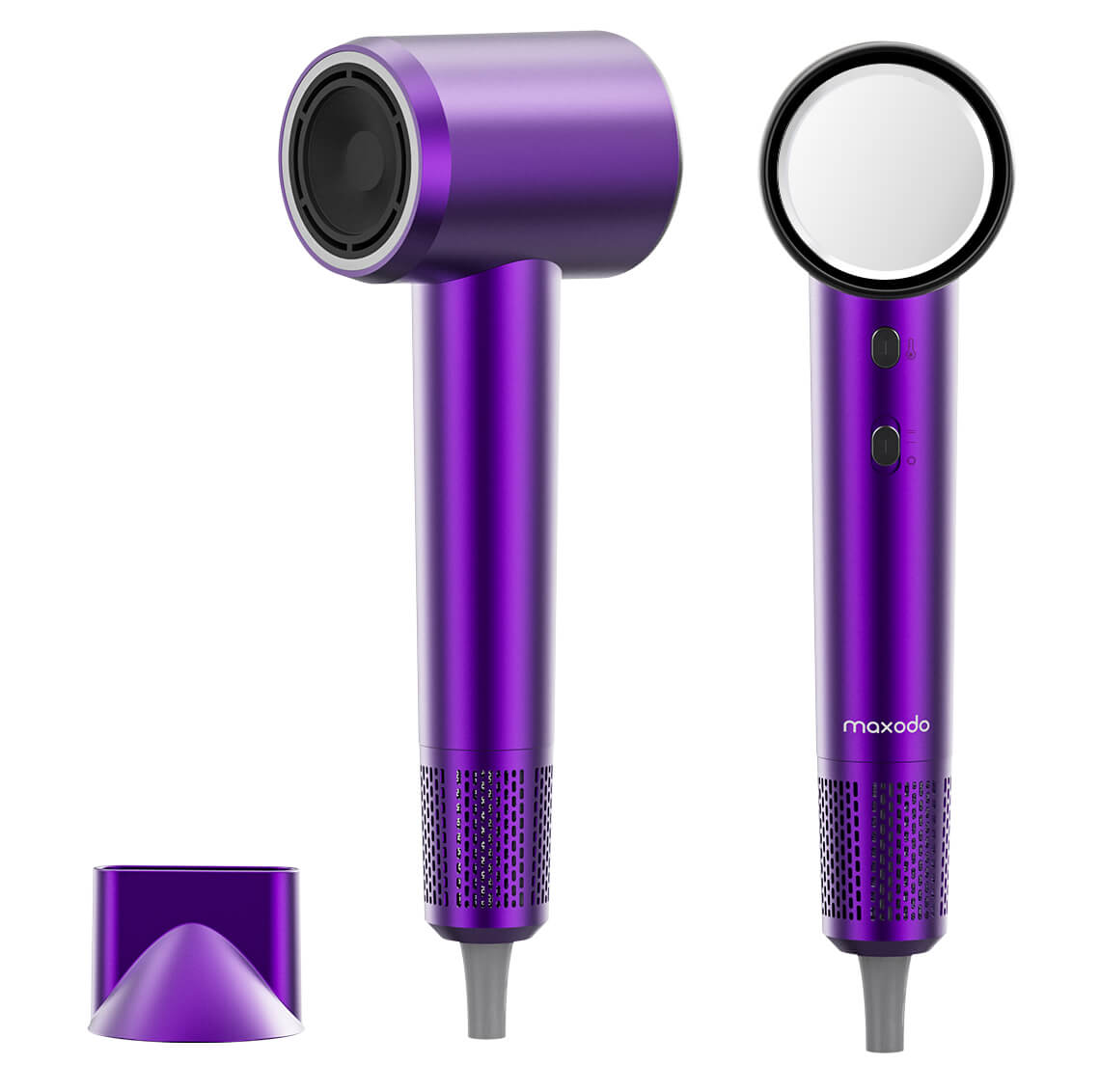
- Home
- Hair Dryer
- Best Picks
- Frizz and Shine: The Impact of Ionic and Non-Ionic Hair Dryers
Frizz and Shine: The Impact of Ionic and Non-Ionic Hair Dryers

The realm of hair care technology has witnessed a significant evolution, particularly in the development and sophistication of hair dryers. At its core, hair dryer technology is designed to expedite the evaporation of water from your hair, reducing the time it takes to dry your hair after a wash. However, the science behind how hair dryers achieve this is far from simple. Modern hair dryers utilize a combination of heat and airflow, with advanced models incorporating ionic or ceramic technology to enhance the drying process while minimizing heat damage. Ionic hair dryers emit negatively charged ions that break down water molecules, speeding up drying time and reducing frizz. Ceramic dryers, on the other hand, distribute heat more evenly, preventing hot spots and hair damage.
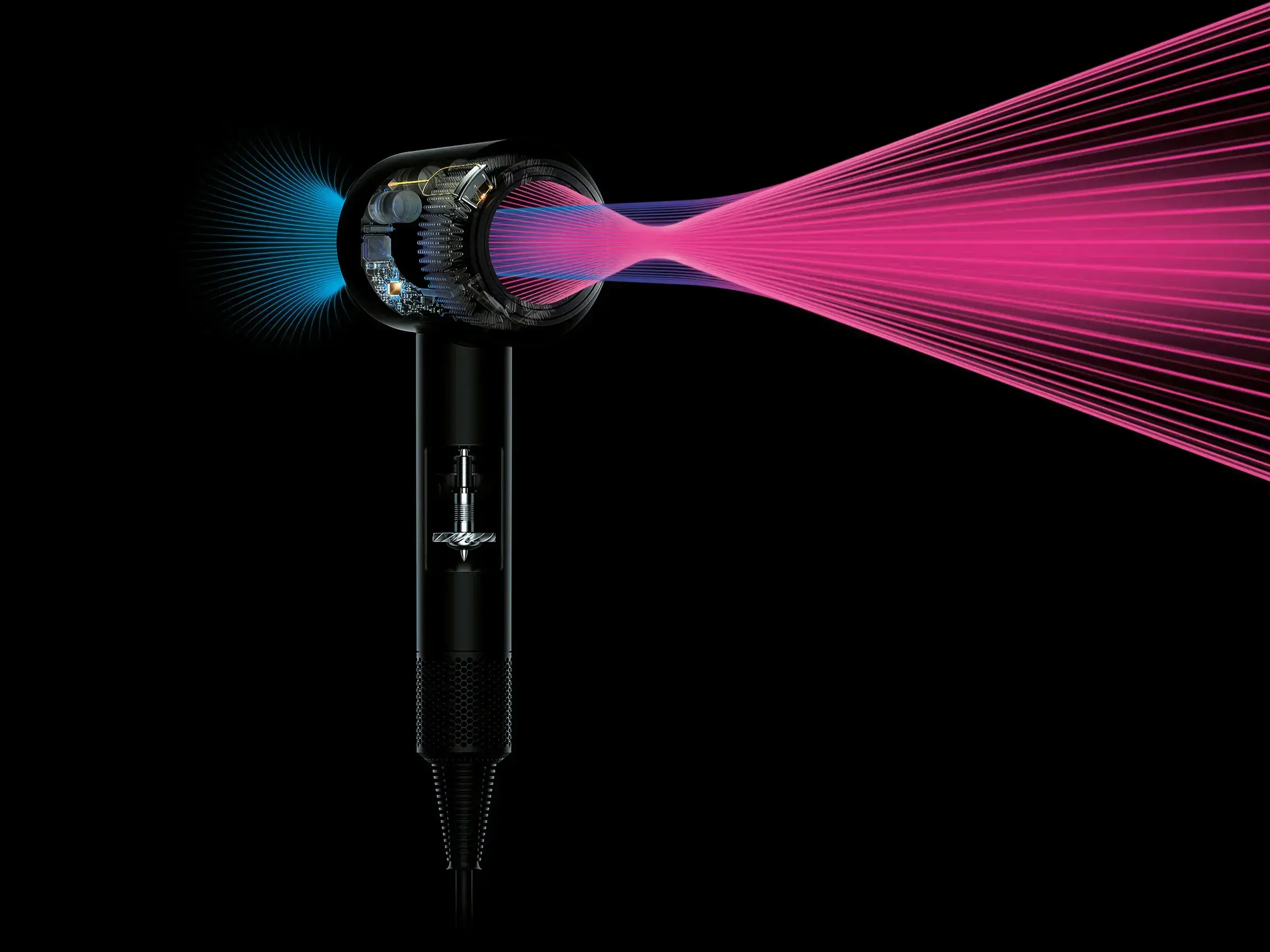
The Evolution of Hair Dryers: From Simple Tools to Advanced Devices
The journey of hair dryers from basic tools to sophisticated gadgets encapsulates the progress in hair care technology. Initially, hair dryers were no more than rigid, bulky machines that were hard to handle and offered little more than hot air. Over the decades, they have transformed into lightweight, versatile devices with multiple settings for heat and speed, and features tailored to different hair types and styling needs. The introduction of ionic and ceramic technologies marked a pivotal shift, focusing not just on drying hair but on enhancing hair’s health and appearance. Today’s hair dryers can boast features such as cool shot buttons to set styles, diffuser attachments for curly hair, and concentrators for precise styling, illustrating how far this essential tool has come in its ability to cater to a wide range of hair care requirements.
Chapter 1: The Science of Hair
The Structure of Hair: Cuticles, Cortex, and Medulla
To truly understand how hair dryers affect your hair, it’s essential to delve into the anatomy of hair itself. Hair is composed of three layers: the cuticle, cortex, and medulla. The cuticle is the outermost layer, made up of overlapping scales that protect the inner layers. It’s responsible for the shine and smoothness of your hair. Beneath the cuticle lies the cortex, which contains fibrous proteins and the pigment that gives your hair its color. The cortex is also where the strength and elasticity of your hair come from. The innermost layer, the medulla, may not be present in all hair types and is the most mysterious in terms of function. Together, these layers work to protect your hair from damage and determine its texture and health.
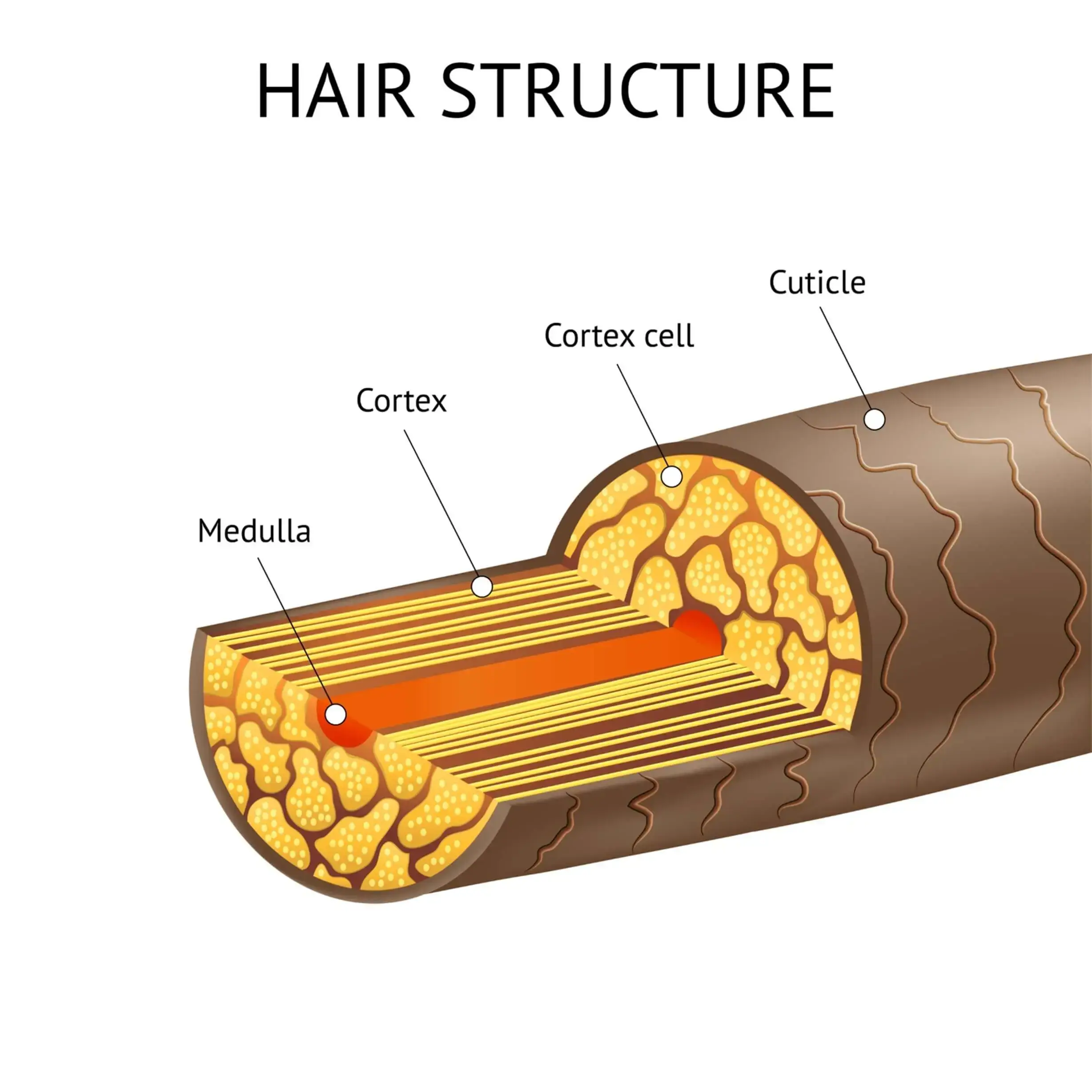
How Hair Reacts to Heat: The Science Explained
When exposed to the heat from a hair dryer, the water in your hair begins to evaporate, starting from the outer cuticle. This process can be beneficial when done correctly, as it allows for quicker drying times and more manageable hair. However, excessive heat can lead to the cuticles lifting or becoming damaged, which in turn makes the hair prone to frizz and breakage. The cortex, when exposed to too much heat, can lose moisture, leading to dry, brittle hair. Moreover, the thermal exposure can break down the hair’s natural proteins, leading to long-term damage. Understanding this reaction is crucial in utilizing hair dryers in a way that minimizes harm while maximizing the styling benefits, highlighting the importance of technological advancements in hair dryer design to mitigate these effects.
Chapter 2: Ionic Hair Dryers
What Makes a Hair Dryer Ionic?
Ionic hair dryers emit negative ions as they dry your hair. These negative ions break down water molecules into smaller, more manageable sizes, allowing the hair to dry faster. This process is in stark contrast to traditional hair dryers that rely solely on heat. The ionic technology not only speeds up the drying time but also reduces the heat damage to the hair shafts, preserving the hair’s natural moisture and improving its overall condition.
Benefits of Using Ionic Hair Dryers
The primary advantage of using ionic hair dryers is their ability to reduce frizz and enhance shine. By breaking down water molecules and sealing the hair cuticles, they minimize frizz and lock in moisture, leaving the hair smooth and glossy. Additionally, because they reduce drying time, there’s less risk of heat damage, making them ideal for daily use. Users often report noticeable improvements in hair texture and manageability with consistent use.
Real-Life Application: How to Maximize Benefits
To get the most out of your ionic hair dryer, start by towel-drying your hair to remove excess moisture. Use a heat protectant spray to further shield your hair from heat damage. When drying, keep the dryer at a distance of about 6 inches from your hair and move it continuously to prevent overheating any particular section. Focus on drying the roots first, then move down to the ends, using a round brush to smooth the hair as you go. Finish with a blast of cool air to seal the cuticles and enhance shine.
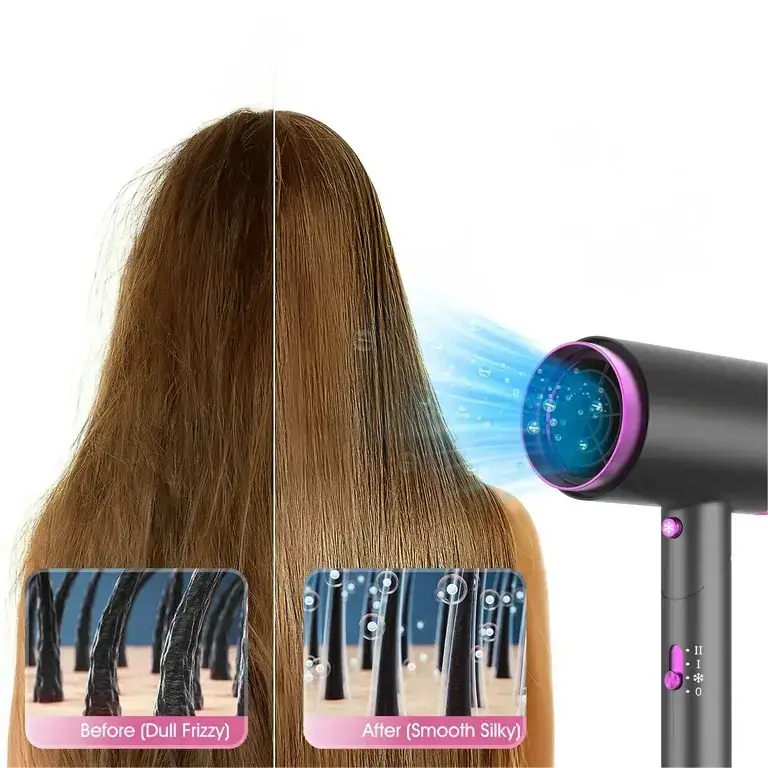
Chapter 3: Non-Ionic Hair Dryers
Understanding the Mechanism of Non-Ionic Hair Dryers
Non-ionic hair dryers work on a simple yet effective principle: they rely on heat and air flow to evaporate water from the hair. Unlike their ionic counterparts, they do not emit negative ions. This means they can take longer to dry the hair and may not offer the same frizz-reducing and shine-enhancing benefits. However, they are often less expensive and can be a suitable option for those with less demanding hair care needs or for those who prefer a more traditional drying method.
When to Choose a Non-Ionic Dryer Over an Ionic One
Selecting a non-ionic dryer might be preferable if you have thin or fine hair that dries quickly without the need for advanced technology. These hair types can sometimes become overly flat and lack volume when dried with an ionic dryer. Additionally, if you’re on a budget, non-ionic dryers can provide a cost-effective solution. They are also suitable for individuals who air-dry their hair most of the time and only occasionally use a hair dryer.
Chapter 4: Comparing Ionic and Non-Ionic Hair Dryers
Performance Analysis: Frizz Reduction and Shine Enhancement
In terms of performance, ionic hair dryers have a clear edge over non-ionic models when it comes to reducing frizz and enhancing shine. The negative ions produced by ionic dryers help to close the hair’s cuticles, reducing frizz and leaving the hair smoother and more reflective. This can be particularly beneficial in humid conditions or for individuals with naturally frizzy or curly hair. Non-ionic dryers, while effective at drying hair, may not offer the same level of frizz control or shine.
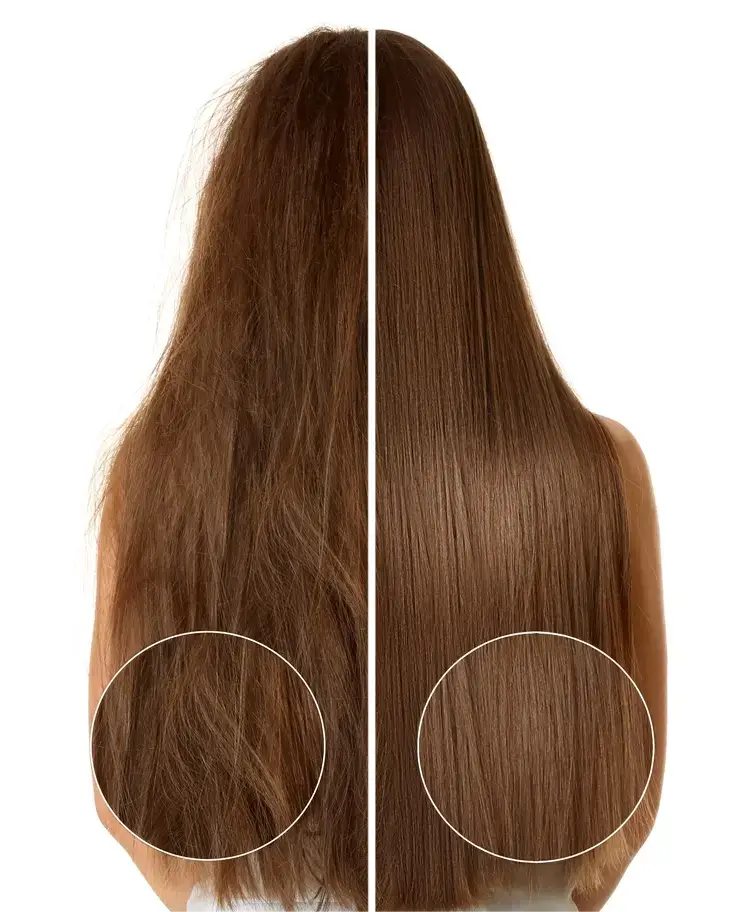
User Experiences: What People Are Saying
Feedback from users tends to highlight the quick drying times and frizz-reducing capabilities of ionic dryers as their main advantages. Many note a significant difference in hair texture and shine after switching to an ionic model. On the other hand, users of non-ionic dryers often appreciate their simplicity and reliability, especially for straightforward drying needs. Some users prefer non-ionic dryers for their ability to add volume to fine hair, indicating that the best choice depends on individual hair types and styling preferences.
Chapter 5: The Best Practices for Drying Your Hair
Tips for Using Your Hair Dryer Effectively
Start with a Good Towel Dry: Before you even plug in your hair dryer, gently towel dry your hair to remove excess water. Be gentle to avoid damaging the hair cuticles.
Use a Heat Protectant: Always apply a heat protectant to your hair before drying. This helps minimize heat damage and keeps your hair looking healthy.
Choose the Right Attachment: Use the concentrator nozzle for straight styles or the diffuser for curly or wavy styles. These attachments help distribute the heat more evenly and enhance your desired style.
Adjust Heat Settings: Start with a lower heat setting to prevent overheating and damage. Increase the heat gradually if necessary, but always finish with a cool shot to seal the hair cuticles, enhancing shine and hold.
Keep the Dryer Moving: Avoid focusing the dryer on one spot for too long. Keep it moving to distribute heat evenly and prevent damage.
Distance Matters: Keep the hair dryer at least 6 inches away from your hair. This reduces heat exposure and helps prevent frizz and damage.
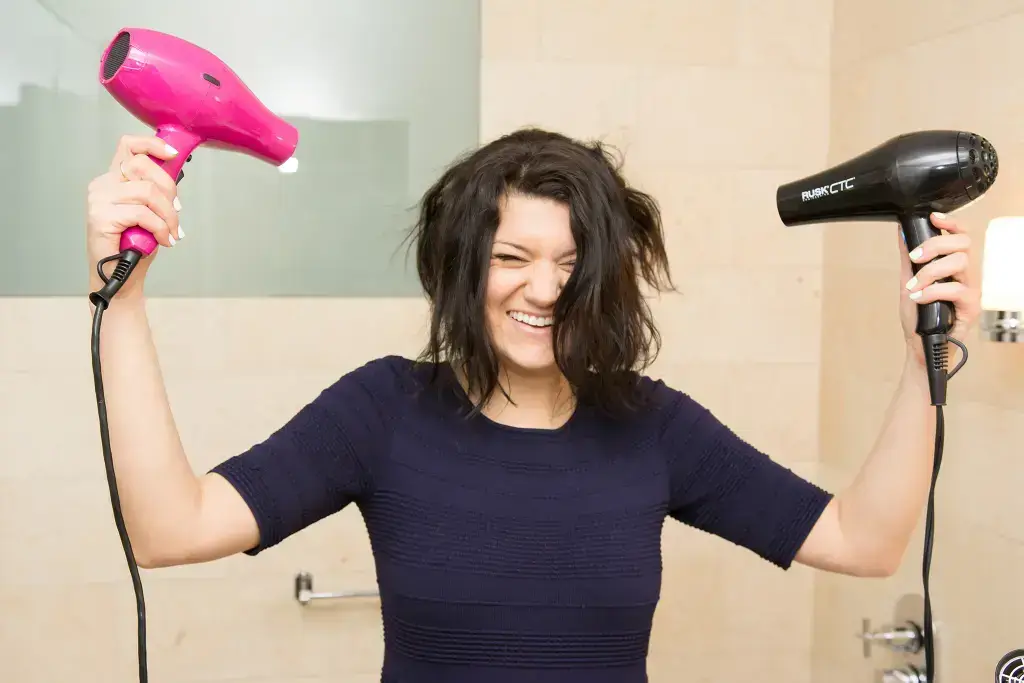
Dry in Sections: For a smoother finish, dry your hair in sections. Clip up the top layers and start with the lower sections, working your way up.
Protecting Your Hair from Heat Damage
Regular Trims: Regular trims help prevent split ends and breakage, keeping your hair looking healthy and making it easier to style.
Deep Conditioning: Incorporate a deep conditioning treatment into your routine once a week to replenish moisture and nutrients lost during styling.
Avoid Overwashing: Washing your hair too often can strip it of its natural oils, leading to dryness and increased vulnerability to heat damage.
Invest in Quality Hair Care Products: Use shampoos, conditioners, and styling products that are formulated for your hair type and designed to protect against heat damage.
Limit Heat Styling: Give your hair a break from heat styling as often as possible to prevent chronic damage and maintain its health.
Chapter 6: Beyond the Dryer – Additional Hair Care Tips
The Role of Hair Products in Managing Frizz and Enhancing Shine
Anti-Frizz Serums: These serums coat the hair, providing a smooth surface that reflects light better and resists moisture—key in preventing frizz.
Shine Sprays and Oils: Lightweight oils and shine sprays can be applied to dry hair to enhance shine without making it greasy. Look for products with natural oils like argan or jojoba.
Leave-In Conditioners: These conditioners provide continuous moisture throughout the day, helping to manage frizz and make hair more manageable.
Volumizing Mousse: A good mousse can add volume to your hair without making it frizzy. Apply it to damp hair from roots to ends before drying.
DIY Hair Care Treatments for Healthy, Vibrant Tresses
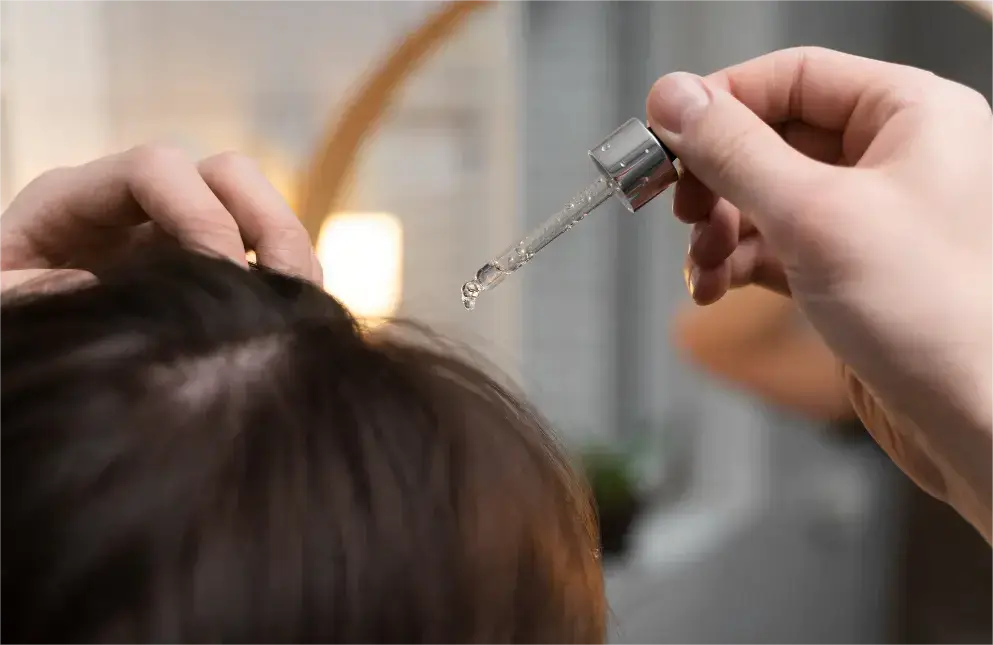
Avocado Mask: Mash a ripe avocado with a tablespoon of olive oil and apply it to wet hair. Avocado is rich in vitamins and oils that deeply moisturize and strengthen hair.
Egg and Honey Mask: Beat an egg and mix it with a tablespoon of honey. This mixture is great for adding shine and strength to your hair.
Apple Cider Vinegar Rinse: After shampooing, rinse your hair with a mixture of apple cider vinegar and water. This helps to clarify the scalp, remove buildup, and add shine.
Coconut Oil Treatment: Apply warm coconut oil to your hair from roots to ends and leave it on for at least an hour or overnight. Coconut oil is excellent for deep moisturization and repairing damage.
Conclusion: Making the Right Choice for Your Hair
Recap of Key Insights on Ionic vs. Non-Ionic Hair Dryers
Choosing between ionic and non-ionic hair dryers depends largely on your hair type and styling needs. Ionic hair dryers are great for reducing frizz and speeding up drying time, making them ideal for thick, curly, or frizzy hair. Non-ionic dryers, on the other hand, are better suited for fine hair or hair that lacks volume, as they do not compress the hair cuticle in the same way.
Final Thoughts on Navigating Hair Care Choices
The journey to finding the perfect hair care routine is highly personal and can involve a bit of trial and error. Understanding your hair’s needs and how different products and tools affect its health and appearance is key. Remember, the goal is not just to follow trends but to find what truly works for your unique hair type. Protecting your hair from damage while embracing its natural texture and appearance will always yield the best results, ensuring your tresses remain vibrant and healthy.
Popular Post

Ultimate Guide to Using a Hair Dryer with Nozzle for Styling

The Benefits of Using a Hair Dryer with a Diffuser

